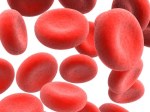Anemia is defined by the World Health Organization (WHO) as “a state in which the concentration of hemoglobin (present in red blood cells) is low as a result of a lack of one or more essential nutrients, whatever the cause of this condition. lack.”
Considered a Public Health problem, anemia can impair mental and psychomotor development, cause an increase in maternal and child mortality, in addition to a decrease in the individual's work performance and reduced resistance to infections.
Remembering that there are several factors that cause anemia:
Iron deficiency anemia: insufficient iron intake to meet individual needs, resulting from nutritional deficiency or malabsorption.
Sickle Cell Anemia: is a hereditary disease (passed from parents to children) characterized by changes in red blood cells (blood cells), making them look like a sickle, hence the name sickle cell. These cells have an altered structure and break more easily, causing anemia.
Megaloblastic anemia: Folate, vitamin B12 or cobalamin deficiencies are the most common and most important causes.
Iron deficiency anemia or iron deficiency anemia is believed to be the most prevalent.
Foods of animal origin: the iron found here is best used by the body, red meat, especially the liver of any animal and other offal (offal), such as kidney and heart; poultry and fish meat, raw seafood.
Foods of plant origin: Dark green leafy vegetables (except raw spinach) stand out as a source of iron, such as watercress, kale, green chili, taioba; legumes (beans, broad beans, chickpeas, peas, lentils); whole or enriched grains; walnuts and chestnuts.
Due to its high prevalence and its consequences, the Ministry of Health made it mandatory to fortify corn and wheat flour with iron and folic acid, as they are easily accessible foods for the population, in addition to being economically viable for the country.
Reference:
Ministry of Health. General Coordination of the National Food and Nutrition Policy.
Jordão RE, Bernardi JLD, Barros Filho AA. Prevalence of iron deficiency anemia in Brazil: a systematic review. Rev Paul Pediatr 2009;27(1):90-8. 2009.


